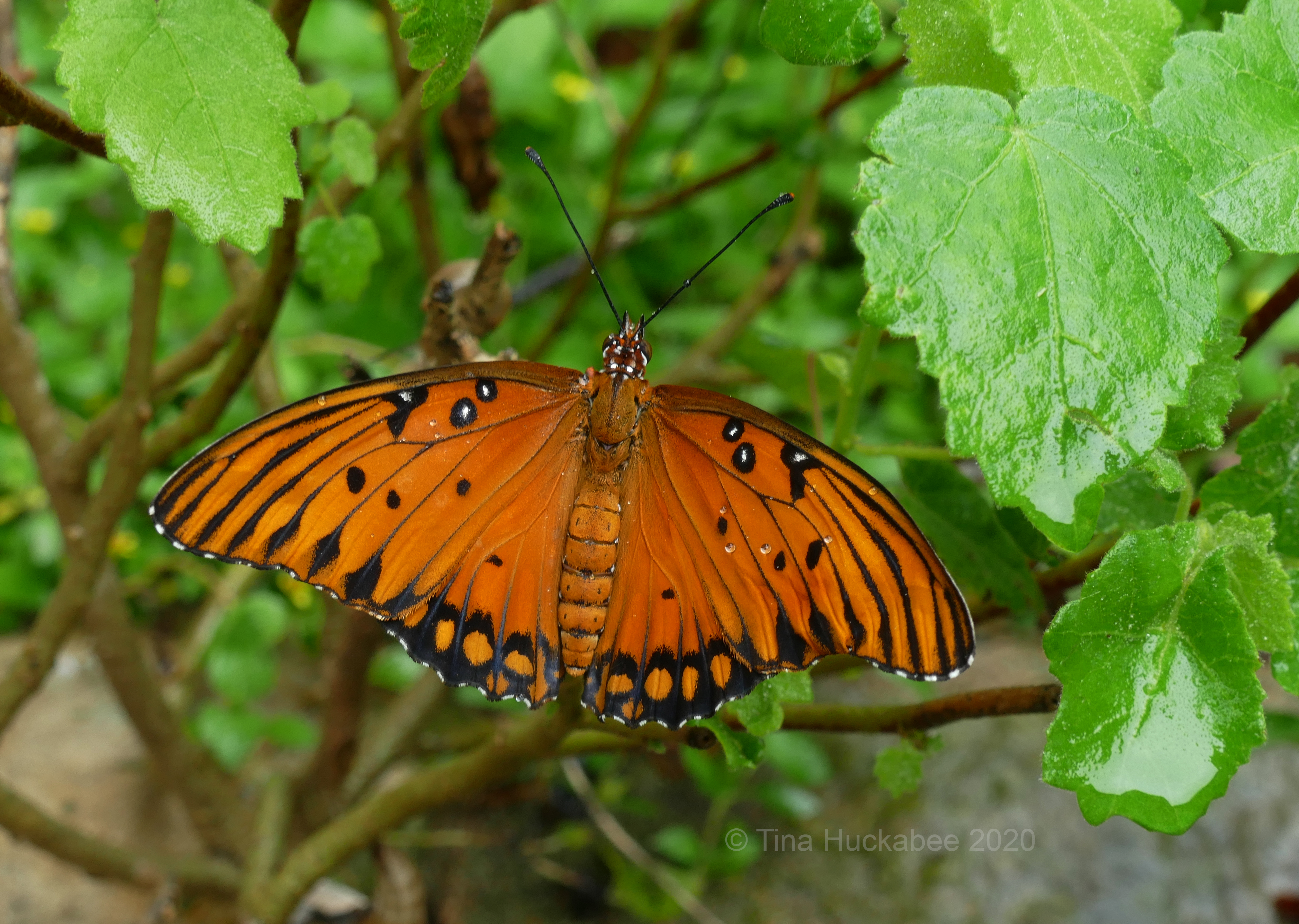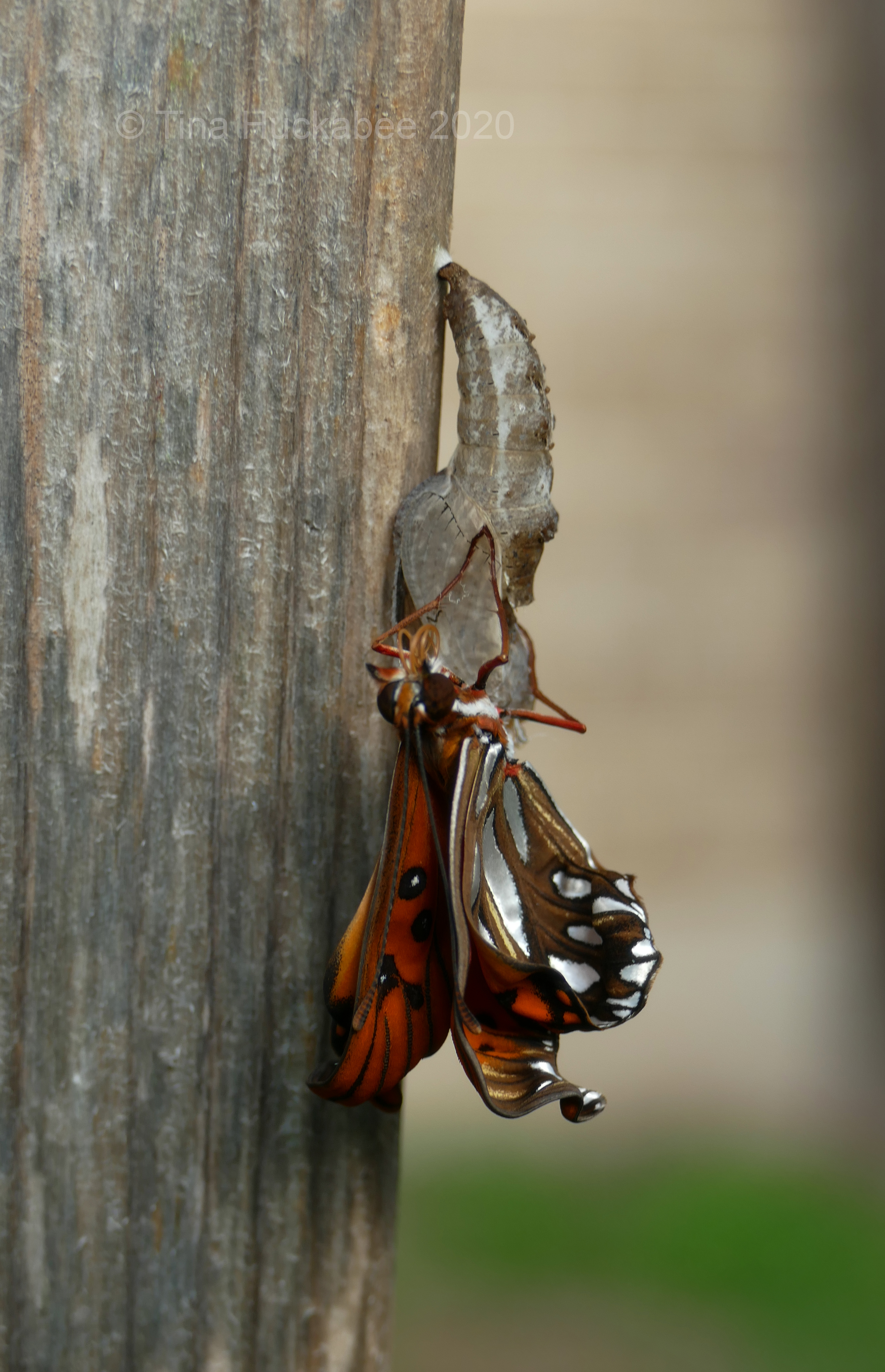In past months, I’ve reported about the Gulf Fritillary, Agraulis vanillae, butterflies and their procreation through the fall/winter months. Recently they’ve intensified production of their population. Many caterpillars, like this one, are currently feeding on my Common Passion flower vine, Passiflora caerulea.

Feeding voraciously means that caterpillars grow. And grow. Eventually, they’re so big that they must find a place to be, to attach, to sequester themselves in place to prepare for their adult life of winging among the flowers.
I wonder how a caterpillar decides where to stop, spin its anchor, and begin its process?
Near to the caterpillar-munched vine, hang individuals–former caterpillars, future butterflies–in varying stages of metamorphosis.

In the above shot, the two at far left are empty, having disgorged their winged adults, who are now presumably out-and-about, nectaring and finding mates–and not necessarily in that order. The blurred ones in the distance hang solemnly while important chemical work happens within their protective walls. The one in the center is probably a newby chrysalis; some of the spiny qualities of the former caterpillar are still attached, not yet sloughed off. The caterpillar leftovers on that chrysalis reminds me of one of those intricate, odd hats donned for horse races and other such fancy events that I’m unlikely to ever attend.

Bat-like visages, butterfly chrysalises are often hard to spot and that’s best for the survival of the insects during the vulnerable morphing stage. In the case of this little colony, there were quite a few attached to the underside of relatively flat ceramic bird bath, which sits atop a trellis post (hosting the passion vine) and at my eye-level. It’s an obvious choice for a morphing spot, safe from prying eyes, except for the gardener’s, who doesn’t view them as a meal.

In these past days, I’ve been extra careful as I deadhead this spring’s magnificent crop of Spiderwort, which are wrapping up their flowering and ramping up their seed production. I’ve got plenty of Spiderwort, thank-you very much, and they must be pruned so that there aren’t scads more next spring. I look twice before I snip, so that the evolving critters attached may continue their journey.

There’s always the comedian in the crowd, too. What was this one thinking? Maybe it was attempting prove that she/he could hold it for the duration of its transformation.

Just beyond that perpendicular, yoga-like position, one hangs from a different human construction, its neighbor connected to a stem. Both content, hopefully safe.

I don’t know which I prefer: to observe (usually over the course of a few days) as a caterpillar morphs to a chrysalis,

…or to bear witness when the new form emerges, or has just emerged.


Both are awesome.

If I were a butterfly, this is where I would choose my rebirth,

…if for no other reason than to add beauty to the garden.

This chrysalis, nearby to both butterflies and empty, was probably the temporary home for one of the butterflies as it transformed from worm to wings.

Chrysalises, still and quiet as we see them, but churning with change and alive with possibilities, are remarkable salutes to the continuation of life and acceptance of situation.


























